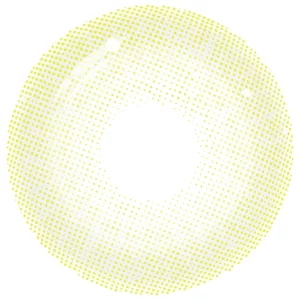How does the handling of colored contact lenses brown differ from regular lenses during the cleaning process?
The handling of colored contact lenses, specifically brown-colored lenses, may not significantly differ from regular lenses during the cleaning process. The cleaning and care routine for colored lenses, including brown ones, is generally similar to that of regular clear contact lenses.
However, there are a few considerations to keep in mind:
- Gentle Handling: Colored contact lenses, including brown ones, should be handled with care during the cleaning process. Be gentle when rubbing or rinsing the lenses to avoid damaging the color layer.
- Use of Recommended Solutions: Follow the recommendations provided by the lens manufacturer and eye care professional regarding the use of cleaning solutions. colored contact lenses brown Some solutions may be specifically designed for colored lenses to ensure the preservation of the color and overall lens integrity.
- Avoid Abrasive Materials: When cleaning colored lenses, avoid using abrasive materials such as hard-bristle brushes, as these can scratch the surface and potentially affect the color quality.
- Check for Compatibility: Ensure that the cleaning solution you use is compatible with colored lenses. Certain solutions may be formulated to be more gentle on colored lenses to prevent any adverse effects on the coloration.
- Minimize Soaking Time: It’s advisable to minimize the soaking time in cleaning solutions to prevent potential fading or discoloration of the lenses. Follow the recommended soaking time specified on the solution packaging.
- Rinse Thoroughly: After cleaning, rinse the lenses thoroughly with sterile saline or the recommended rinsing solution to remove any residual cleaning solution. This helps ensure that no traces of the cleaning solution remain on the lenses.
- Avoid Heat and Hot Water: Avoid exposing colored lenses, including brown ones, to excessive heat or hot water. Hot water may have an impact on the color stability of the lenses.
- Follow the Cleaning Schedule: Adhere to the recommended cleaning schedule provided by your eye care professional. Regular and proper cleaning is essential for maintaining the clarity, comfort, and safety of the lenses, triple tone gray colored contact lenses whether they are colored or regular.
- Replace Solution and Lens Case: Regularly replace the contact lens solution in the lens case, and replace the lens case itself every three months to prevent contamination and maintain optimal lens hygiene.
- Regular Check-ups: Schedule regular check-ups with your eye care professional to ensure that the colored lenses fit well, provide clear vision, and are in good condition.
Remember that the specific care instructions for colored lenses may vary depending on the brand and material of the lenses. Always refer to the instructions provided by the manufacturer and consult with your eye care professional for personalized advice based on your eye health and the type of lenses you are using.
How often should the lens case for triple tone gray colored contact lenses be replaced?
The recommended frequency for replacing the lens case for triple-tone gray colored contact lenses, or any contact lenses for that matter, is typically every three months. Regularly replacing the lens case is important to maintain good hygiene and reduce the risk of bacterial contamination.
Here are some considerations and tips for replacing lens cases:
- Bacterial Buildup: Over time, lens cases can accumulate bacteria and other microorganisms. Regular replacement helps minimize the risk of eye infections and ensures a clean environment for your contact lenses.
- Lens Case Material: Lens cases are often made of plastic, which can develop tiny scratches and imperfections over time. These imperfections may harbor bacteria, even with thorough cleaning. Regular replacement helps address this issue.
- Wear and Tear: The mechanical components of a lens case, such as the screw-on caps and the hinge, can experience wear and tear over repeated use. Replacing the case every three months helps ensure that these components remain in good condition.
- Cleaning Challenges: Despite regular cleaning, some debris or cleaning solution residue may accumulate in hard-to-reach areas of the lens case. Replacing the case periodically ensures a fresh start with a clean and uncontaminated container.
- Compliance with Recommendations: Eye care professionals often recommend replacing the lens case regularly as part of a comprehensive lens care routine. Adhering to these recommendations supports optimal eye health.
- Preventing Contamination: Using a new, sterile lens case minimizes the risk of contamination from old solution or residual deposits. It provides a clean environment for storing and disinfecting your contact lenses.
- Labeling the Replacement Date: Consider labeling the lens case with the replacement date to keep track of when it should be replaced. This simple practice helps ensure that you adhere to the recommended replacement schedule.
- Travel Considerations: If you travel frequently, it’s a good idea to have spare lens cases for convenience. Travel-sized cases are available and can be replaced more frequently to maintain cleanliness on the go.
Remember that proper lens case care is essential between replacements. Rinse the case with sterile contact lens solution, allow it to air dry, and keep it in a clean and dry environment. Additionally, avoid using tap water or saliva to rinse or store contact lenses, as these can introduce harmful microorganisms.
If you experience any discomfort or notice changes in the appearance of your triple-tone gray colored contact lenses, it’s important to consult with your eye care professional. They can provide guidance on lens care, replacement schedules, and address any concerns related to your eye health.

